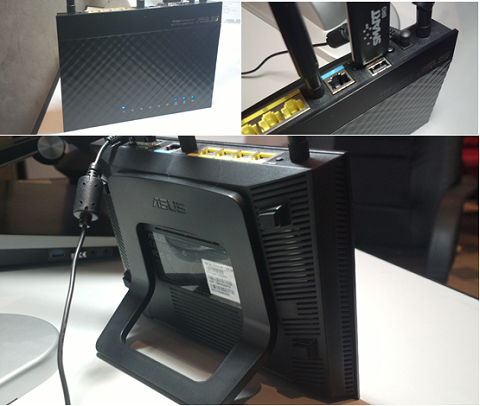A group of talented individuals over at the University of Liverpool, spearheaded by Network Security Professor Allan Marshall, has developed a virus called Chameleon which not only can infiltrate “poorly managed” Routers and Access Points, but also effectively spread to other wireless devices, particularly in a dense populated area where Wi-Fi networks are abundant.
Just to set things clear, the researchers didn’t intend to hack unknowing users when they developed Chameleon, but rather to merely demonstrate the vulnerability of a Wi-Fi network and how such virus can eventually infect other wireless devices.

Of course, Marshall’s team didn’t give a lot of insights on how they developed Chameleon so as to not serve as a reference to real-life hackers. They did, however, state that the virus can go undetected by current security measures and, once it infiltrates the network, has the ability re-flash the device’s firmware and replace it with OpenWrt.
After gaining access to a given network, the virus allows hackers to intercept sensitive data like financial information and passwords. The study also showed that the Chameleon has the potential to spread across other wireless networks, making it a very potent tool for hackers if not addressed quickly.

Apart from keeping users from having a false sense of security, Marshall’s team is also hoping that their case study will also serve as a plea to router/AP manufacturers and antivirus companies to improve the security feature of their products.
But all is not lost. Based on their findings, one way that users can combat the attack is by not using the default security (i.e default password) supplied by the service provider or device manufacturer. This method will make it a little more challenging for the virus to penetrate their network, which can eventually lead to more serious repercussions.

YugaTech.com is the largest and longest-running technology site in the Philippines. Originally established in October 2002, the site was transformed into a full-fledged technology platform in 2005.
How to transfer, withdraw money from PayPal to GCash
Prices of Starlink satellite in the Philippines
Install Google GBox to Huawei smartphones
Pag-IBIG MP2 online application
How to check PhilHealth contributions online
How to find your SIM card serial number
Globe, PLDT, Converge, Sky: Unli fiber internet plans compared
10 biggest games in the Google Play Store
LTO periodic medical exam for 10-year licenses
Netflix codes to unlock hidden TV shows, movies
Apple, Asus, Cherry Mobile, Huawei, LG, Nokia, Oppo, Samsung, Sony, Vivo, Xiaomi, Lenovo, Infinix Mobile, Pocophone, Honor, iPhone, OnePlus, Tecno, Realme, HTC, Gionee, Kata, IQ00, Redmi, Razer, CloudFone, Motorola, Panasonic, TCL, Wiko
Best Android smartphones between PHP 20,000 - 25,000
Smartphones under PHP 10,000 in the Philippines
Smartphones under PHP 12K Philippines
Best smartphones for kids under PHP 7,000
Smartphones under PHP 15,000 in the Philippines
Best Android smartphones between PHP 15,000 - 20,000
Smartphones under PHP 20,000 in the Philippines
Most affordable 5G phones in the Philippines under PHP 20K
5G smartphones in the Philippines under PHP 16K
Smartphone pricelist Philippines 2024
Smartphone pricelist Philippines 2023
Smartphone pricelist Philippines 2022
Smartphone pricelist Philippines 2021
Smartphone pricelist Philippines 2020
ocommon says:
Just a simple tip, change the password instead of ‘admin’ and ‘admin’ and also change the settings to wpa2psk saka change the wifi password at least every 3 months
abuzalzal says:
Medyo out of topic ito pero sa mga PLDT DSL subscribers (na hindi nakakaalam) na may default password na ‘PLDTWIFIXXXXX’ palitan niyo yan ASAP kasi may simple workaround yan sa Android (an APK file called WiFi password sniffer)
In just less than 10 seconds, singhot kaagad yang password ninyo.
Abutroll says:
Nakakasinghot rin yan ng donated na clean sperm?
troll says:
sige ikalat pa hahaha sarap ng free net
dags says:
“In just less than 10 seconds, singhot kaagad yang password ninyo.”
Not if you’re using a password that’s a string combination of mixed uppercase and lowercase letters, numbers and symbols and a good encryption protocol.
Long and complicated passwords are no surefire way to totally protect yourself from hackers – they just make things more complicated for the hacker. Every single password out there can be cracked with the right computer with the right processing power.
wew says:
@abuzalzal is correct may pattern ung default pass ng PLDT MyDSL router “PLDTWIFIXXXXX”,ung limang X eh ung last 5 characters sa MAC address.
testUser says:
haha.. may mailagay lang na pictures..
sam witwicky says:
Thanks to globe locking the firmware updater on my pocket wifi, it should be safe :P
Hen-Sheen says:
A T-Mobile router, classic. A Router/Modem Password should be at least 20 characters long without repeating a single character; That’s from experience.